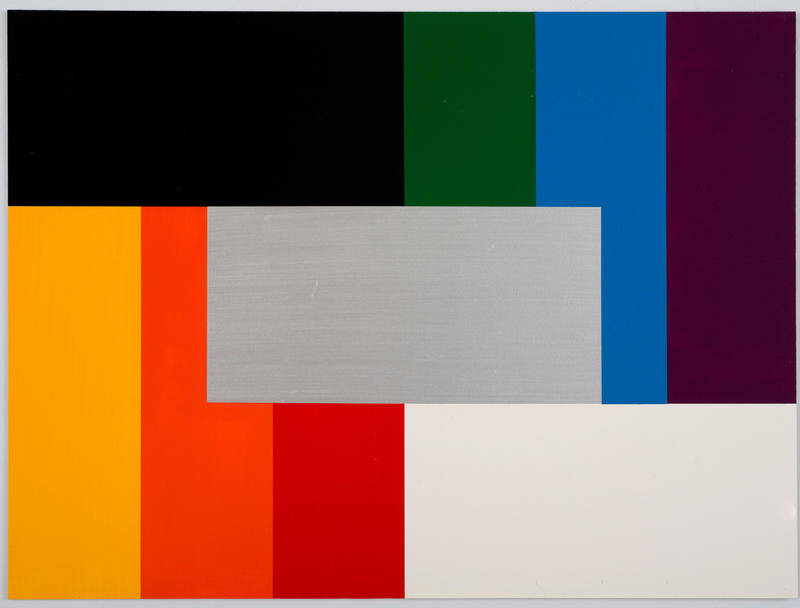
Polychrome Painting Part B by John Nixon (2009), Chartwell Collection, Auckland Art Gallery Toi o Tāmaki, gift of the artist, 2014
Knowing how cognitive systems work in art making delivers understanding of creative thinking.
Nature and all its elements as well as the body and mind work together in a symbiotic relationship of cause and affect.
For visual perception we use light-generated signals. Sunlight reflects off objects into the eyes creating and sending signals to the body/brain. Other perceiving sense organs also receive data and send signals similarly. Adding complexity, often at an unrecognisable level, are other natural influences which have effects on us too- including gravity, motion, time, space, and chance. As these intersections of natural phenomena and the body happen and affect each other, objects are made.
Invention, intuition and intellect combine. All this data, from varied sources, is processed in different ways however it is the subconscious mind that manages all the sensory primary data and responds emotionally. Drawing on memory, it seeks out patterns, similarities and variations which then trigger the ability to produce and discover new ideas, new conceptual and aesthetic object/meanings.
Through this action of intuiting, gathering, feeling, sensing and experiencing the ‘data of the world’ in the creation of a new object/meaning, we experience a form of interactive transference. This process, which the artist submits to, can be then knowingly manipulated and extended to other objects/meanings.
The different arts disciplines are all based on similar systems i.e. transference via sense emoted data, some using secondary sign systems (e.g. words) developed to help structure or determine the outcomes we respond most positively too.
The regular use of our capacities for this kind of constructive compositional thinking, using our perceiving/cognitive systems, then helps us maintain and develop our general creative mind/body potential. Further learnings happen through reflection on the thinking and making process.
Written by Rob Gardiner, February 2020
